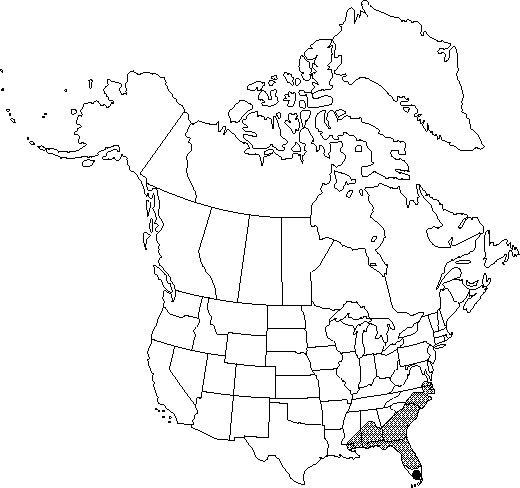Quercus laevis
Fl. Carol., 234. 1788.
Trees or shrubs, deciduous, to 20 m. Bark bluish gray, deeply furrowed, inner bark orangish or reddish. Twigs dark reddish-brown with distinct grayish cast, (1.5-) 2-3.5 (-4) mm diam., sparsely pubescent to almost glabrous. Terminal buds light-brown to reddish-brown, conic or narrowly ovoid-ellipsoid, 5.5-12 mm, pubescent. Leaves: petiole 5-25 mm, glabrous. Leaf-blade circular or broadly ovate-elliptic, widest near or proximal to middle, 100-200 × 80-150 mm, base attenuate to acute, occasionally obtuse or rounded, blade decurrent on petiole, margins with 3-7 (-9) lobes and 7-20 awns, lobes attenuate to falcate, occasionally oblong or distally expanded, apex acute to acuminate; surfaces abaxially occasionally orange-scurfy, usually glabrous except for conspicuous axillary tufts of tomentum, adaxially glabrous, secondary-veins raised on both surfaces. Acorns biennial; cup somewhat goblet-shaped, 9-14 mm high × 16-24 mm wide, covering 1/3 nut, outer surface puberulent, inner surface pubescent, scales occasionally tuberculate, tips loose, especially at margin of cup, acute, margin conspicuously involute; nut ovoid to broadly ellipsoid, 17-28 × 12-18 mm, often faintly striate, glabrate, scar diam. 6-10 mm.
Phenology: Flowering early to mid spring.
Habitat: Dry sandy soils of barrens, sandhills, and well-drained ridges
Elevation: 0-150 m
Distribution

Ala., Fla., Ga., La., Miss., N.C., S.C., Va.
Discussion
Quercus laevis reportedly hybridizes with Q. falcata (= Q. ×blufftonensis Trelease), Q. hemisphaerica, Q. incana, and Q. marilandica (C. S. Sargent 1918); with Q. nigra; and with Q. arkansana, Q. coccinea, Q. myrtifolia, Q. phellos, Q. shumardii, and Q. velutina (D. M. Hunt 1989).
Selected References
None.
